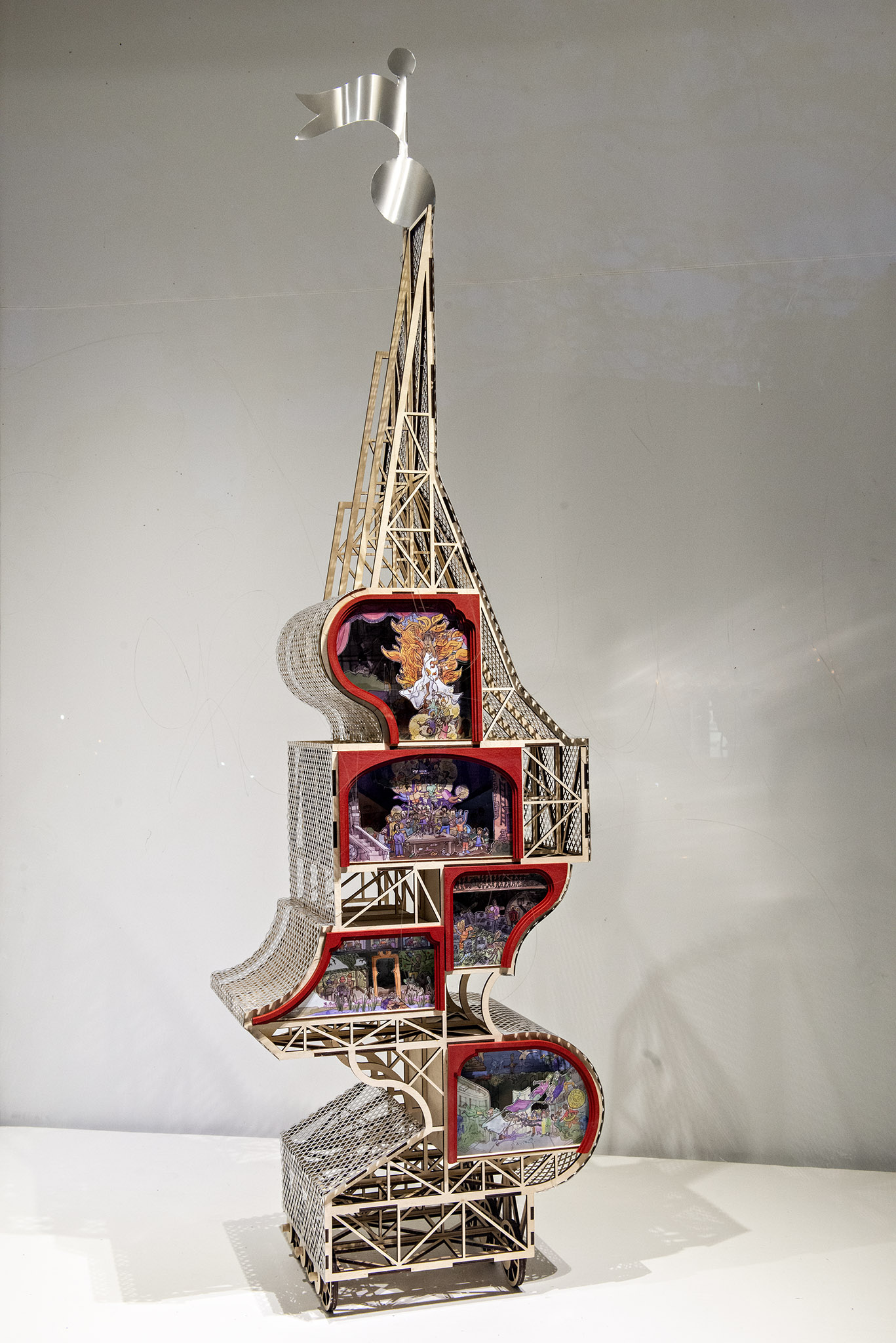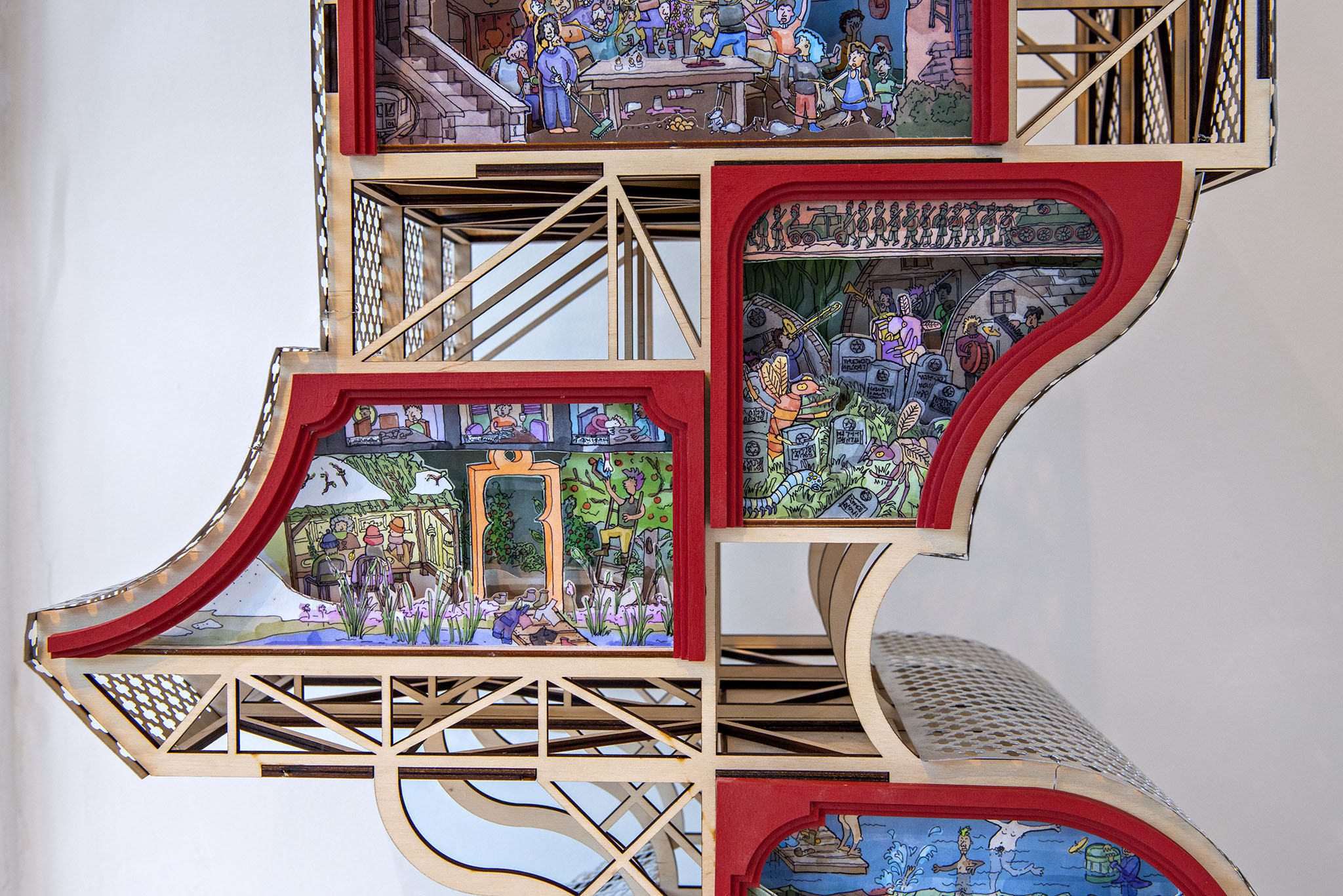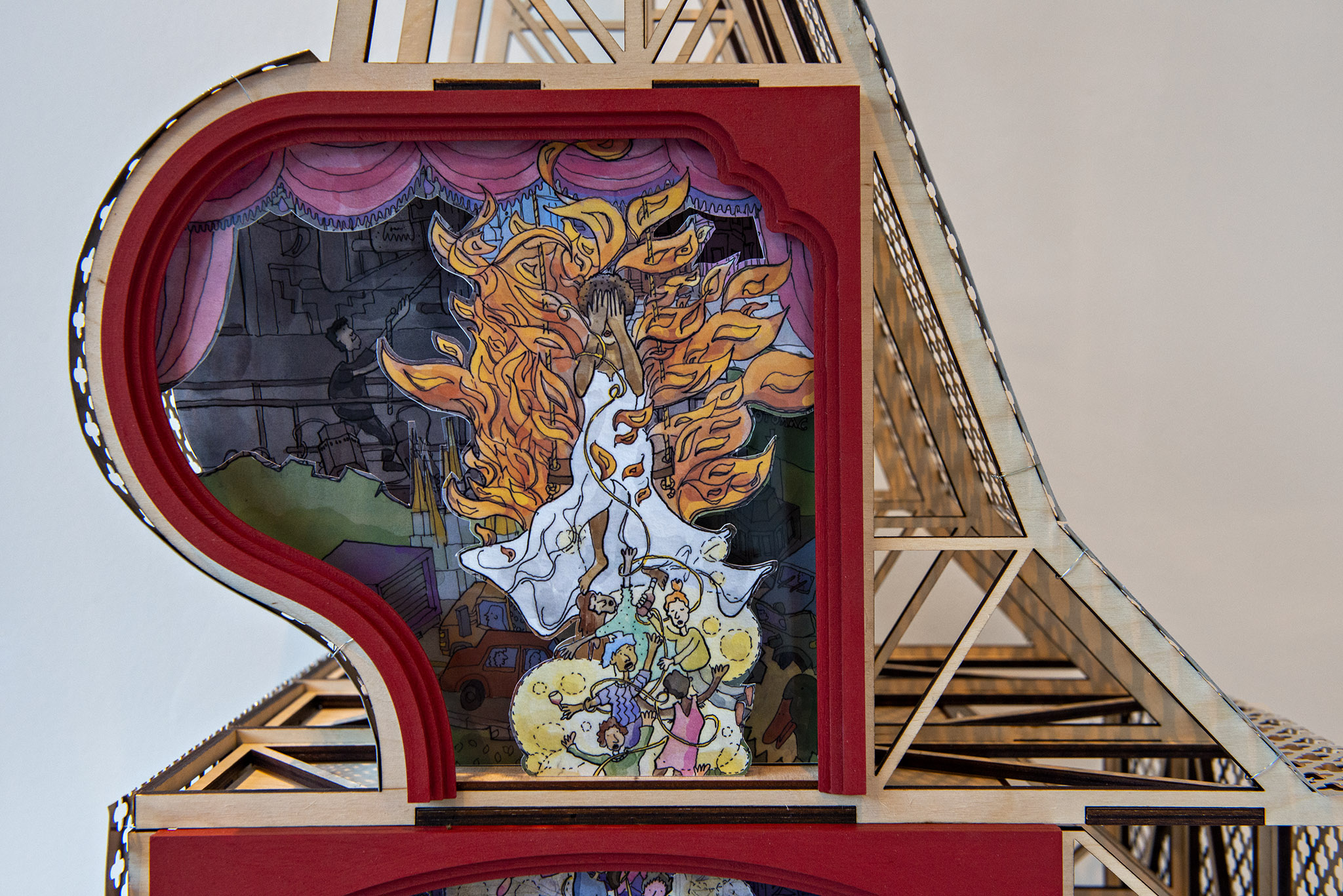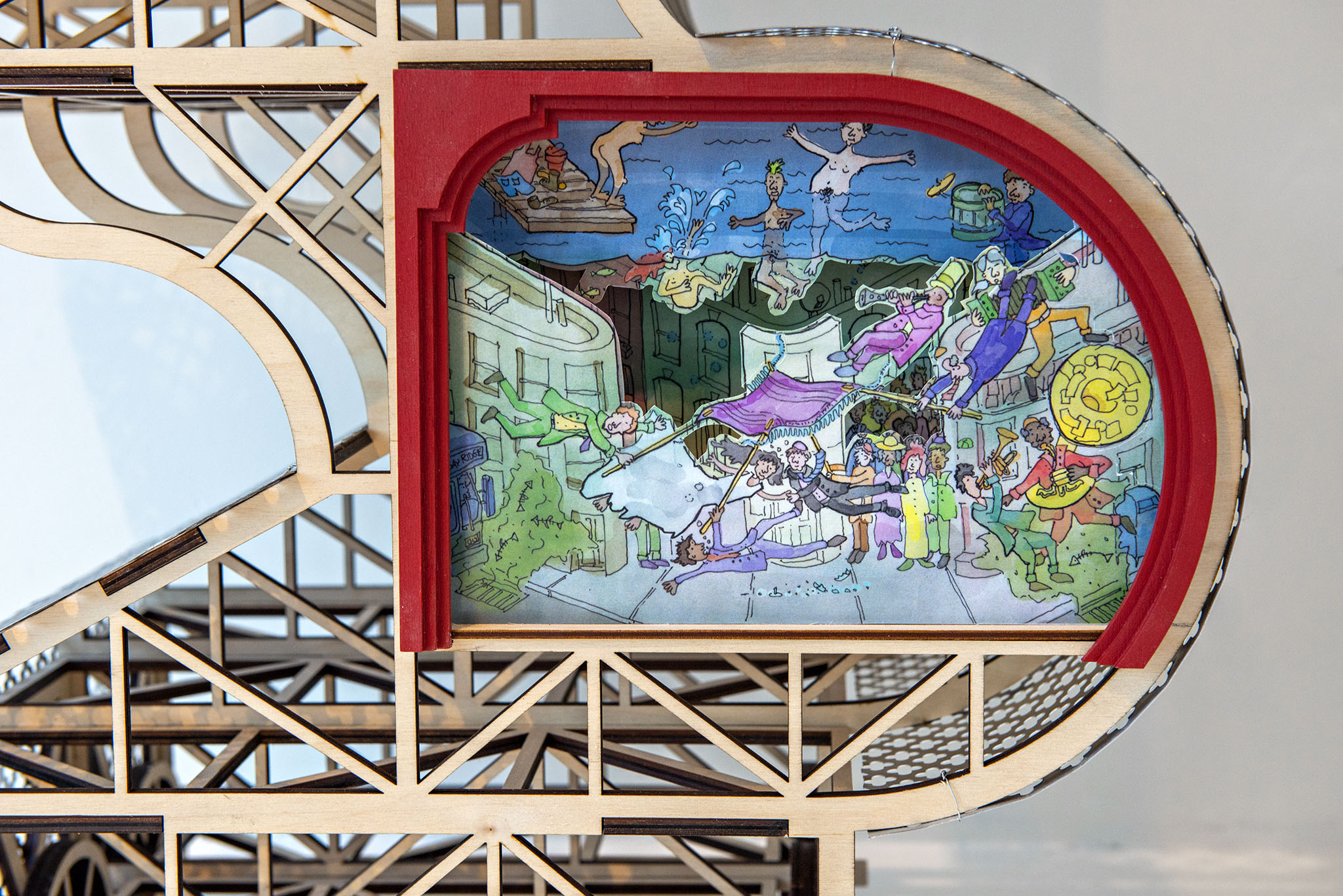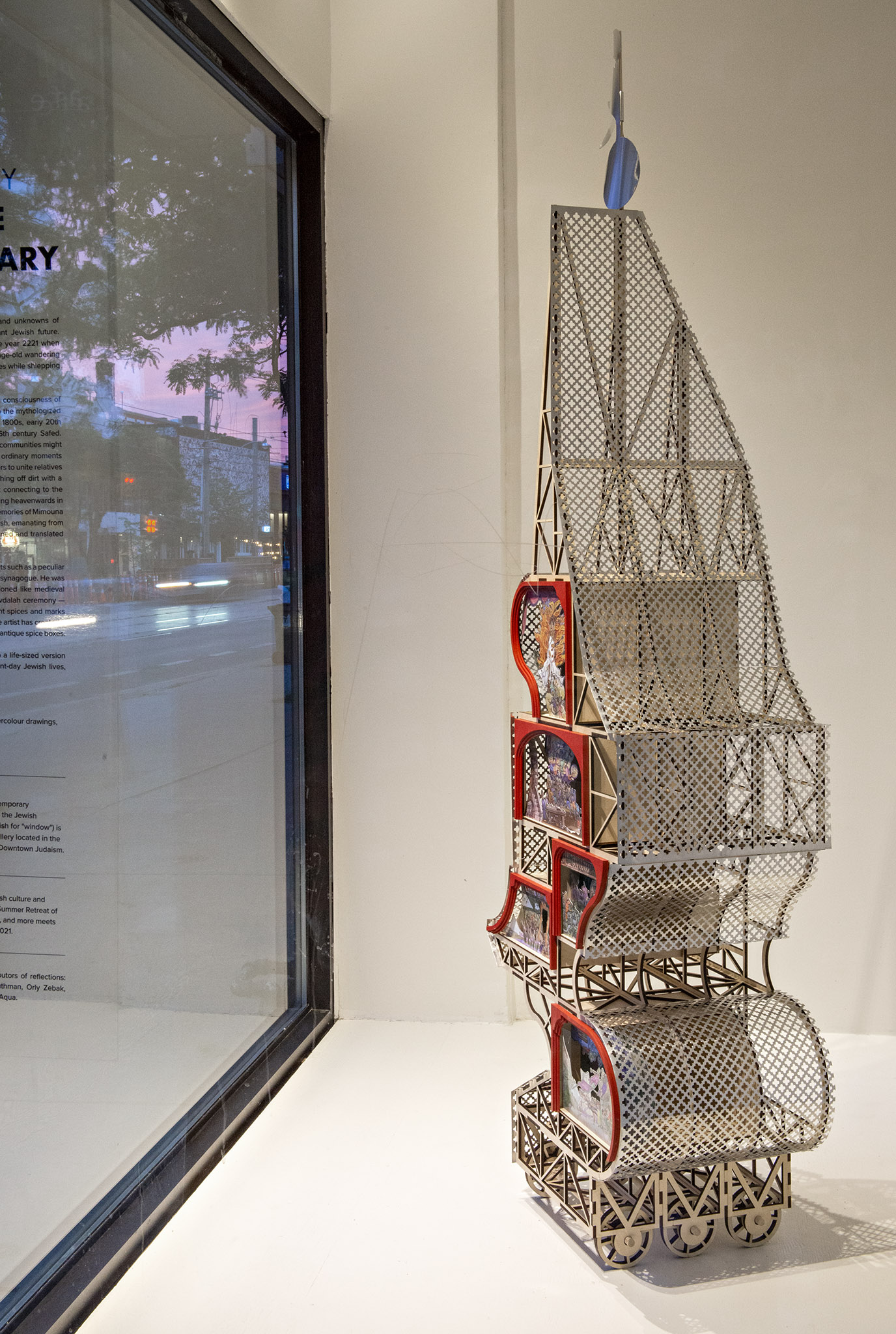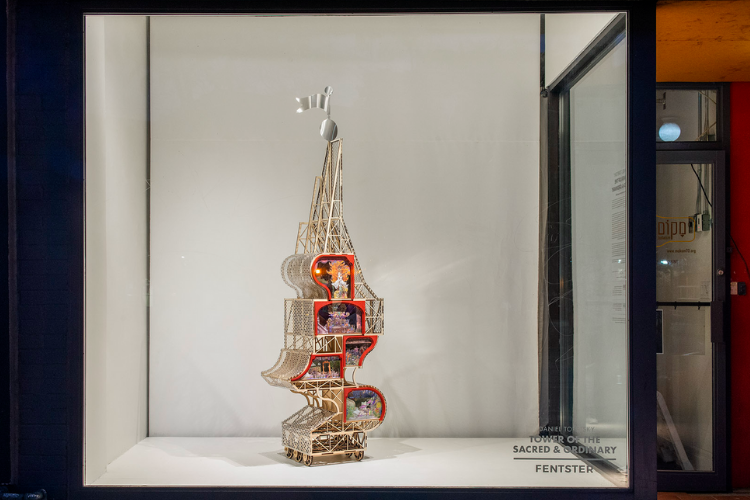
Looking Back from an Imaginary Future, Through Art
What happens when economic and climate collapse renders our cities unlivable? What might Jewish life look like in a climate-ravaged future when our communities are forced to wander once again?
New York-based artist and architect Daniel Toretsky imagines that calamitous (but not entirely farfetched) future in the exhibition, Tower of the Sacred and Ordinary—on display at Toronto’s FENTSTER window gallery until November 17. For the window, the artist designed a monumental tower inspired by traditional European silver havdalah spice boxes often fashioned like medieval castles complete with flag-topped turrets.
Toretsky’s project taps into an undercurrent in the collective Jewish consciousness, a romanticizing of places from our past. A yearning persists among many to return to periods and places in Jewish history that have over time been cast in an idealized light, as the artist puts it: “nostalgia for lost Jewish worlds.” His work draws from the oft mythologized pre-war Eastern European shtetl and the Moroccan mellah neighbourhoods of the 1800s, or 16th century Tzfat.
As part of his creative process, Toretsky asked a diverse group of North American Jewish artists how our current communities might be memorialized by future generations, 200 years from now. He received a wide range of responses which he combined and turned into whimsical three-dimensional drawings, filling his mobile structure.
The memories and moments these artists, musicians, and filmmakers shared for Toretsky to illustrate evoke a dynamic, contemporary Jewish milieu.
And it begs the question: what rituals, practices or stories—from the sacred to the ordinary—from your Jewish life would you want to see preserved in the far-off future?
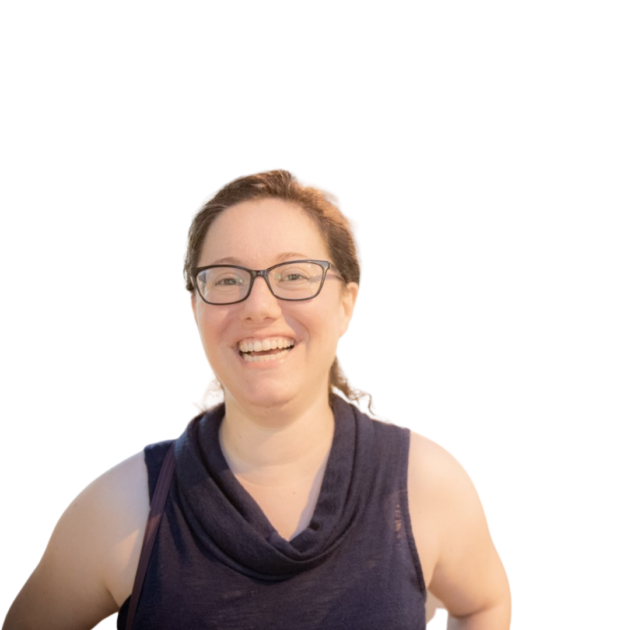
Sharoni Sibony
Visual Artist
“Unlike many other Jewish families, my family chose not to live in the Mellah, but in the Medina, a mixed neighbourhood. My uncle Nessim spent years researching and documenting the customs and rituals of his Jewish Moroccan childhood, in his art and in a series of self-published works, and his images filled my imagination. I loved his depiction of the Mimouna, a festive celebration that closes out Passover, which he depicted as a scene bursting with multi-coloured flowers and fragrances on a path down from town to the beach..”
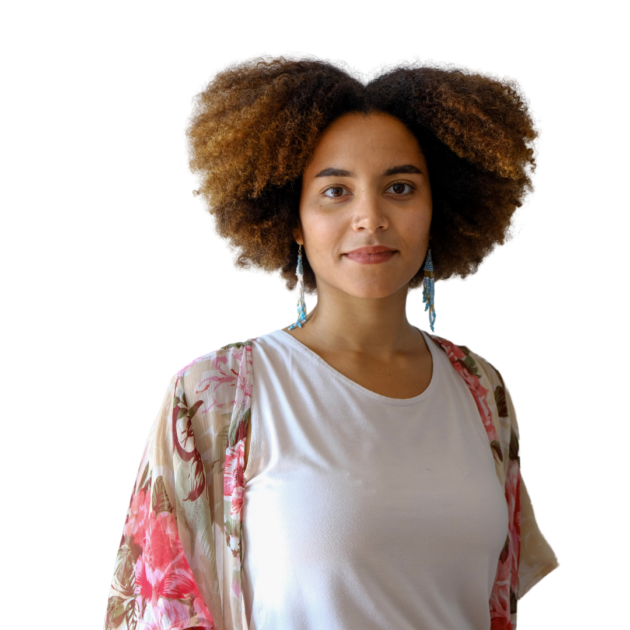
Sara Yacobi-Harris
Filmmaker & Founder of No Silence on Race
“In a re-imagined Jewish future, I think that what will remain as strong as ever is the light of the Shabbat queen. Each Shabbat, when I light candles with the women in my life and waft the flames towards my face, I imagine my entire body being ignited by the flames, the flames travelling all the way from my head into every cell of my body, calling me towards my divine feminine spirit and reminding me of the intuitive powers of this state. I think of the way the flames dance through my body and spread to those around me also calling the men in the room to connect to their feminine energy that is often neglected and/or suppressed. I imagine a future where men and women can continue to dance between the gender roles assigned in ritual practice and continue to reap the gifts of these sacred moments.”
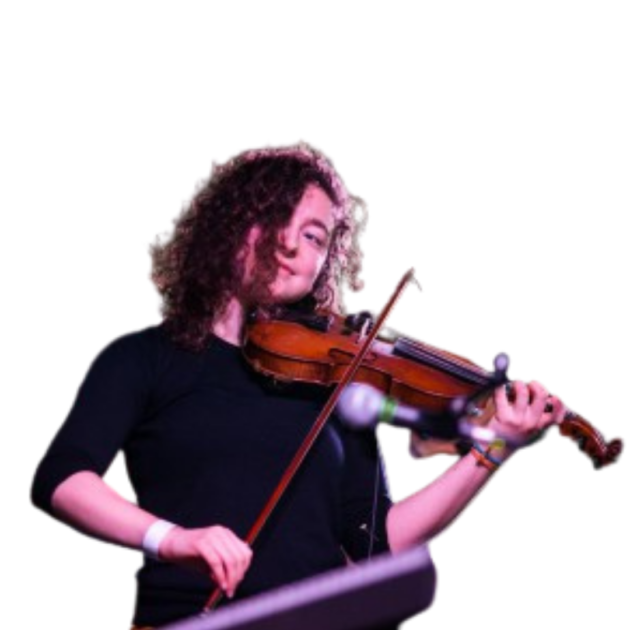
Lillie Pearlman
Community Activist & Fiddle Player
“It’s 3 pm on a Friday and we’ve finished the work we needed to do on the farm [as part of the Adamah Jewish Farming Fellowship ]. Our bodies are well used and glowing from gentle sun— not the sun of 2200. We talk loudly together while walking down to the lake, which perfectly reflects a beautiful tree-covered mountain. The air is hot and summery. We’re hungry and physically tired, but the spirituality of our energy is just ramping up.
We stand together on the dock, seven young Jews of many genders, split between the mechitza as we like, and leap into the lake together— SPLASH CRASH DIP SLIP SPLASH. We come up for air— bodies fearful, in shock, and thrilled from the cold— and one of us begins as we wipe the fresh lake-water from our eyes: Baruch ata adonai/ brucha at yah shekhina eloheinu melekh/ruach ha-olam asher kid-shanu b’mitzvo-tav v’tzi-vanu al ha-tevilah. We dip twice more in a chorus of splishes and splashes, and the mood lightens. We yell with glee and revel in the softness of the water on our skin and muscles and bones. Together we cleaned off the week’s work, and together we crashed loudly and floated softly into Shabbat.”

Gisun
Musician
“In the future of 2221, I wonder if it will be possible to find quiet moments in nature and pristine landscapes that provide a rejuvenating experience? I hope that future generations of Jews 2000 years from now will celebrate in community and connect with all of Judaism and it’s multiracial, multicultural practices. I hope Jewish discourse will have opened up to more than just the Ashkenazi versus Sephardi conversation. I’d like to see a future where all kinds of Judaism are celebrated with a more open interpretation and storytelling element.”
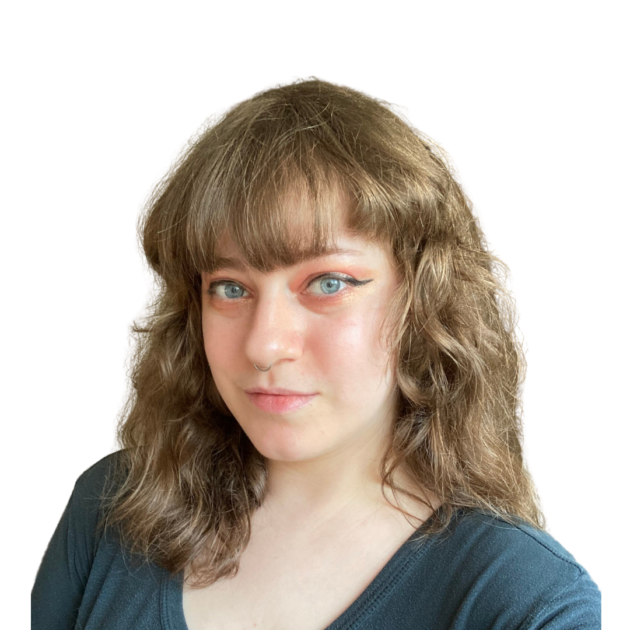
Ari Lewis-Weigens
Musician & Video Games Language Editor
“Passover during the pandemic was memorable, navigating gathering restrictions and an 8 pm curfew. I went to my parents house that afternoon and for one hour we prepped everything needed for seder: matzo ball soup and all. My uncle had dropped off charoset on the porch earlier that day. Then, we divided all the dishes into takeaway containers for each household and I went back to my place. Later that night, everyone logged onto Zoom from separate homes to still share the seder together.”
Evelyn Tauben is the curator of FENTSTER. For more of these contributions, check out FENTSTER’s Instagram page.

